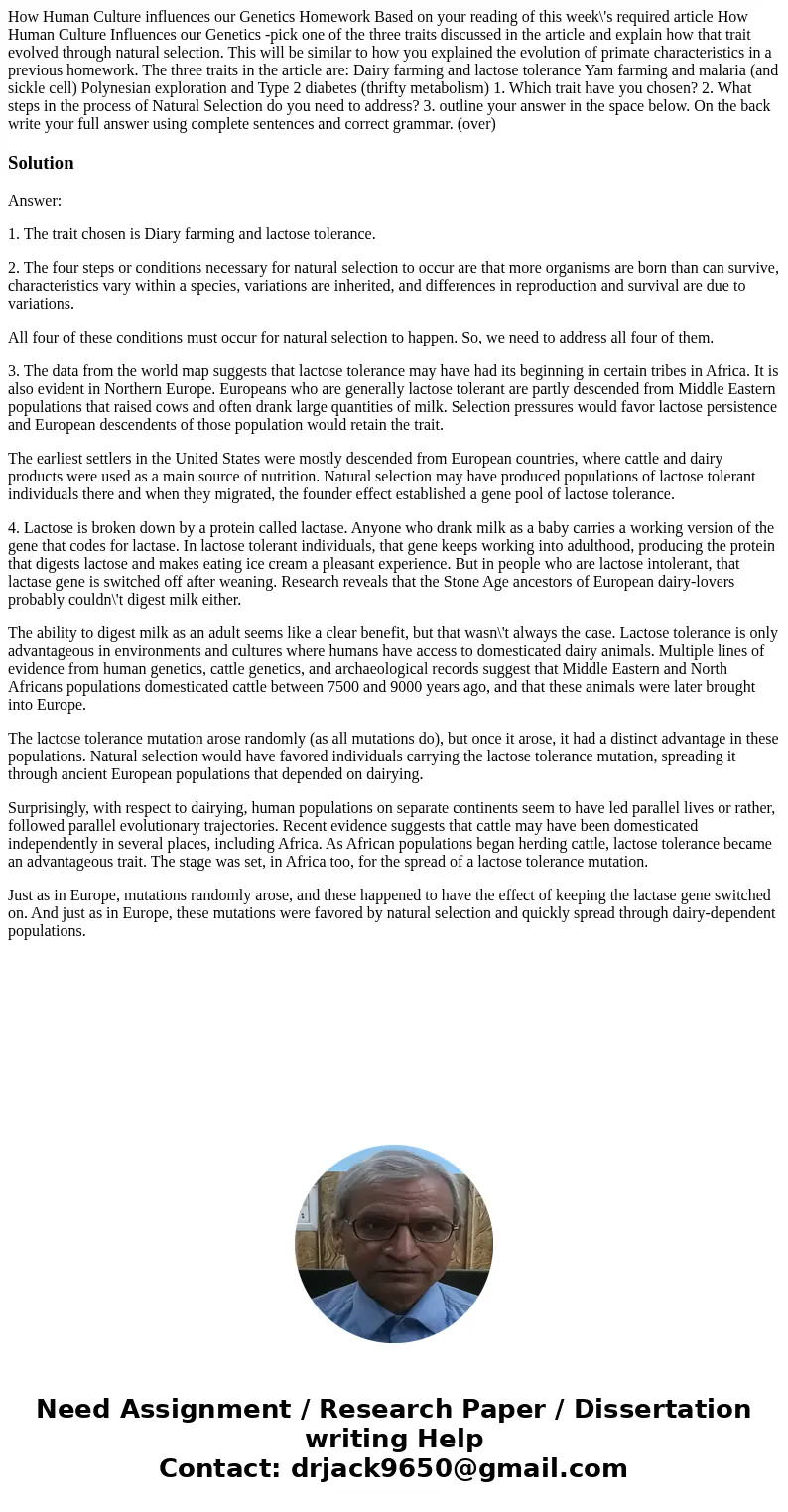How Human Culture influences our Genetics Homework Based on
Solution
Answer:
1. The trait chosen is Diary farming and lactose tolerance.
2. The four steps or conditions necessary for natural selection to occur are that more organisms are born than can survive, characteristics vary within a species, variations are inherited, and differences in reproduction and survival are due to variations.
All four of these conditions must occur for natural selection to happen. So, we need to address all four of them.
3. The data from the world map suggests that lactose tolerance may have had its beginning in certain tribes in Africa. It is also evident in Northern Europe. Europeans who are generally lactose tolerant are partly descended from Middle Eastern populations that raised cows and often drank large quantities of milk. Selection pressures would favor lactose persistence and European descendents of those population would retain the trait.
The earliest settlers in the United States were mostly descended from European countries, where cattle and dairy products were used as a main source of nutrition. Natural selection may have produced populations of lactose tolerant individuals there and when they migrated, the founder effect established a gene pool of lactose tolerance.
4. Lactose is broken down by a protein called lactase. Anyone who drank milk as a baby carries a working version of the gene that codes for lactase. In lactose tolerant individuals, that gene keeps working into adulthood, producing the protein that digests lactose and makes eating ice cream a pleasant experience. But in people who are lactose intolerant, that lactase gene is switched off after weaning. Research reveals that the Stone Age ancestors of European dairy-lovers probably couldn\'t digest milk either.
The ability to digest milk as an adult seems like a clear benefit, but that wasn\'t always the case. Lactose tolerance is only advantageous in environments and cultures where humans have access to domesticated dairy animals. Multiple lines of evidence from human genetics, cattle genetics, and archaeological records suggest that Middle Eastern and North Africans populations domesticated cattle between 7500 and 9000 years ago, and that these animals were later brought into Europe.
The lactose tolerance mutation arose randomly (as all mutations do), but once it arose, it had a distinct advantage in these populations. Natural selection would have favored individuals carrying the lactose tolerance mutation, spreading it through ancient European populations that depended on dairying.
Surprisingly, with respect to dairying, human populations on separate continents seem to have led parallel lives or rather, followed parallel evolutionary trajectories. Recent evidence suggests that cattle may have been domesticated independently in several places, including Africa. As African populations began herding cattle, lactose tolerance became an advantageous trait. The stage was set, in Africa too, for the spread of a lactose tolerance mutation.
Just as in Europe, mutations randomly arose, and these happened to have the effect of keeping the lactase gene switched on. And just as in Europe, these mutations were favored by natural selection and quickly spread through dairy-dependent populations.

 Homework Sourse
Homework Sourse